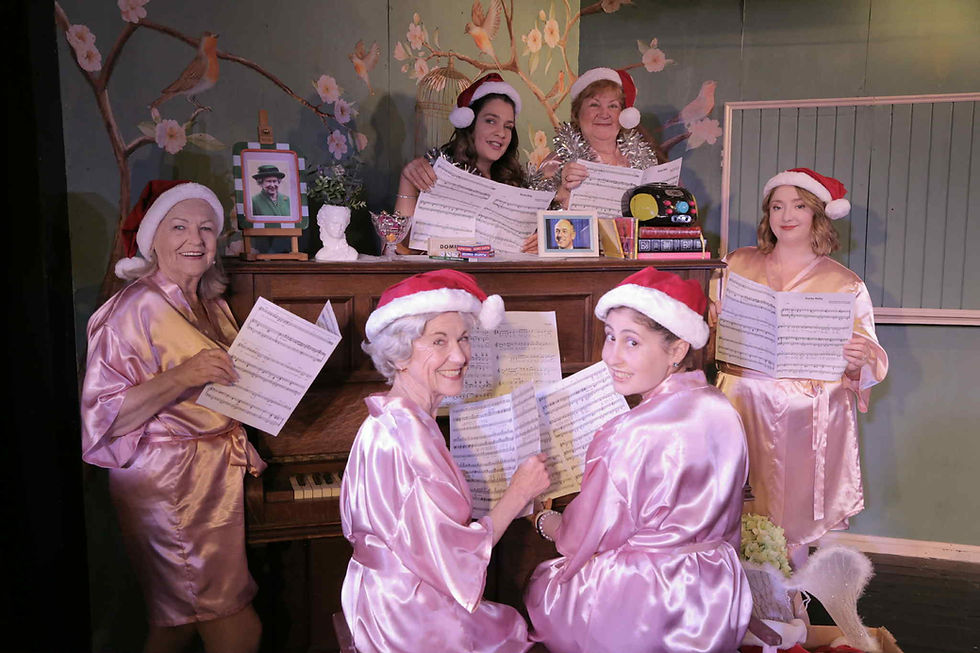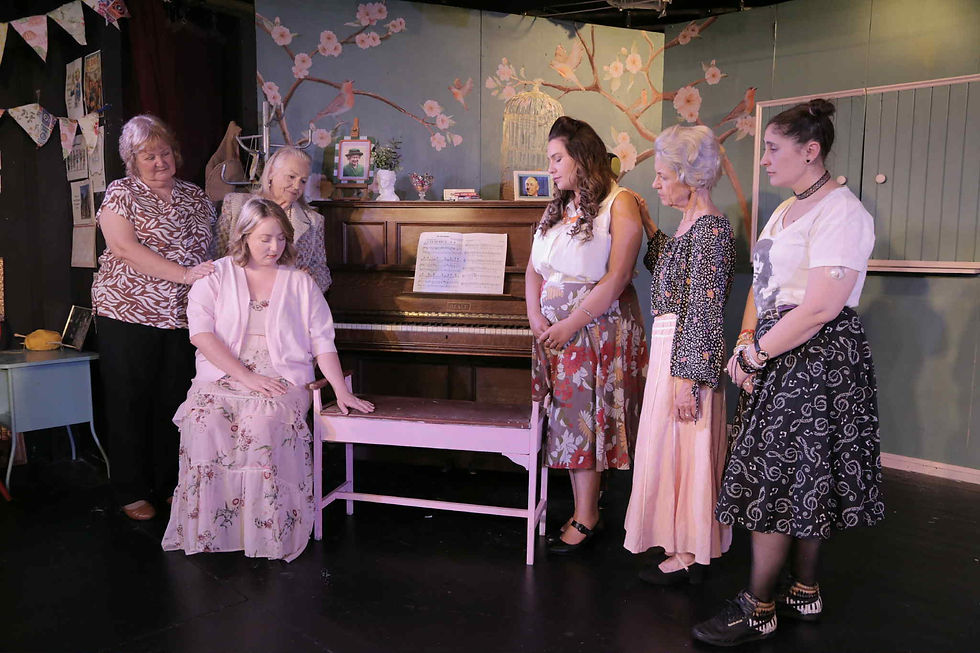Henry Lawson Theatre Inc: Calendar Girls – Review by Simon Peppercorn
- danielconway0
- Sep 21
- 4 min read
The opening night of Calendar Girls at the Henry Lawson Theatre was a triumph of heart, humour, and community spirit. Under the talented direction of Nicole Smith, with the steady hand of assistant director Lisa Prophet, the production embraced both the comic charm and the emotional depth of Tim Firth’s play. It reminded us why amateur theatre continues to resonate so strongly: it is built on passion, dedication, and a straightforward urge to share something meaningful.

At the heart of the story were Chris and Annie, played by Jessica Hanlon and Holly-Leigh Prophet, whose contrasting energies worked beautifully together. Hanlon nailed Chris's cheeky, take-charge vibe with a spark of mischief that pulled you right in, and Prophet gave Annie this understated resilience, tender and raw, that anchored the whole show. Their friendship felt lived-in and real, carrying the emotional weight of the story.
The ensemble brought further richness. Rosie Crossing's Jessie was a highlight and had me grinning with her dry one-liners and straight-talking edge. Jenny Van Der Lem shone as Ruth, mixing sharp laughs with these fragile glimpses into her character's tough spots.
Angela Pezzano as Cora injected vibrancy and wit, and Chris Snell’s Celia sparkled with self-assurance and cheek. Cindy Partridge, as Marie, gave the perfect foil, her poise and comedic toffee-nosed rigidity contrasting well with the rebellious energy of the others.
The men held their own without stealing focus, and providedsteady and memorable support. Darren Gibson’s John, though only seen briefly, left a lasting mark with his gentle humour and warmth, making his absence felt throughout the play. Stephen McCabe as Rod offered dependable presence, and Mark Prophet brought playful comic energy as Liam. Blake Reeves, stepping into Lawrence for this performance, showed youthful charm and enthusiasm in the role (shared with Nash Burton across the season).
Jacqueline Felangue showed impressive range, switching between Brenda Hulse and Lady Cravenshire with style, while Allegra Rodriguez brought sass and sparkle to Elaine on opening night, a role also shared with Leisel Hussey.
What made these performances so engaging was not simply that the actors played their parts well, but that they clearly understood them. Each performer brought nuance, motive, and their own individuality to the stage. These weren’t caricatures. They weren’t playing a ‘type’. They were beathing actual people - flawed, funny, proud, awkward, vulnerable - and all the more relatable for it. The actors had spent time figuring out what made their characters tick, theirquirks, the hidden drives, the little flaws that make people messy and memorable.

The staging made clever use of the theatre’s intimate yet surprisingly comfortable space. Rather than being confined by the smaller stage, the performers leaned into the closeness and heightened the sense of connection between stage and audience. The set design and direction ensured that nothing felt cluttered or cramped; instead, each scene unfolded with a sense of warmth and authenticity, inviting the audience to share in the private world of the Women’s Institute.
What also became clear was the way the cast supported each other through the natural jitters of an opening night. There was a generosity on stage - a willingness to hold a pause just a moment longer, to meet a glance, or to pick up a rhythm when another faltered. The audience wasn’t just watching the action unfold; they were witnessing the cast lean into each other’s energy, turning nerves into authenticity, and creating a performance that felt immediate, genuine, and alive. Every side glance, hesitation, and muffled giggle was not only part of the story but also a glimpse into the trust and teamwork of a company determined to tell the story well. That kind of on-stage teamwork didn't just smooth the rough spots; it amplified everything, mirroring the play's big ideas about sticking together. It turned the show into something raw and right-now and it wove perfectly into the story, showing off a group that trusted each other enough to let it all hang out.
That same spirit of support carried through to the play’s closing moments. The tribute to those affected by cancer was not just a scripted finale but a collective act of solidarity, delivered with sincerity and care, and inviting the audience to share in a moment of solemn respectful reflection. Just as the characters in the play rally around one another in times of need, so too did the cast rally together on stage, holding the weight of the moment as a shared responsibility.
Adding to the authenticity was the show’s program itself, cheekily presented as an actual calendar. Tasteful yet playful, it echoed the theme of the show and carried extra weight knowing that 100% of the proceeds go directly to the Cancer Council.

It was deeply moving to watch a company that had spent the evening lifting one another through nerves and triumphs stand united in honour of a cause bigger than themselves. The result was a conclusion that felt not only poignant, but profoundly authentic. Theatre blurring into real life, becoming one with its community. A reminder of why this story matters.
Recommendation: Don’t miss your chance to see it. Bring your friends, bring your laughter, bring a packet of tissues. But most of all, bring yourself. This is one calendar you’ll be glad you marked.



Comments